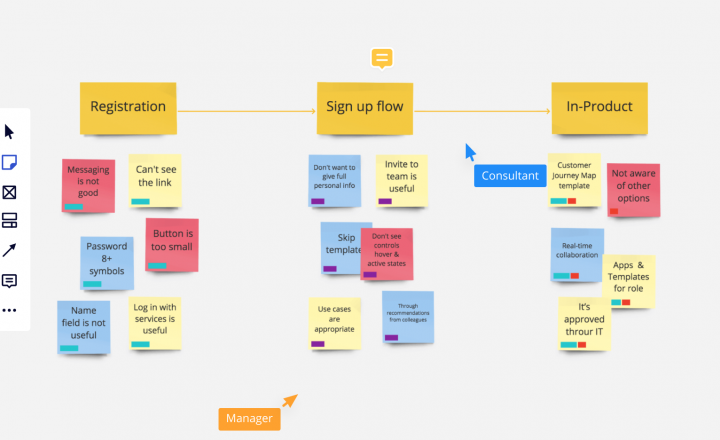
The UX industry is already experiencing the impact of artificial intelligence (AI). AI is progressing at a rapid pace, and so are users’ expectations of personalisation, from requests for tailored content on a TV app to smart recommendations on a travel site. It is no wonder then, that after experiencing Netflix or Amazon’s AI-enhanced services, users’ appetites are surging for personalised experiences based on location, language, operating system, date, time and previous history. At the same time, users long for human-like digital interactions and around-the-clock support. These requirements are complex, but a new generation of chatbots (AI bots, conversational agents or virtual assistants) are aiming to take on the task.
Jumping on the online messengers chatbot bandwagon
It seems that the days of chatbot integration solely as a website widget are gone, and chatbots are fast becoming an on-the-go trend. One of the most interesting areas of development in recent years has been the addition of chatbots to online messengers like WhatsApp, Facebook Messenger, Instagram, Snapchat, Slack and Microsoft Teams.
When businesses choose to combine their chatbots with popular messaging platforms, it benefits both businesses and the customers. For businesses, it gives them access to a global audience through channels that are familiar to users and have scalable levels of engagement. Customers have more flexibility choosing a channel of communication based on their preferences and have access to the full functionality of a service without ever visiting a dedicated website.
In our recent project with a global telecom company the majority of interviewed participants chose WhatsApp as their preferred platform for chatting with the service provider’s virtual assistant.
In response to the Covid-19 crisis, the World Health Organization introduced a WhatsApp exclusive ‘WHO Health Alert’ chatbot. The bot was designed to give fast, reliable information about the coronavirus using keywords and emoji commands. To get started, users only needed to send a simple “hello” message to the number +41 79 781 87 91.
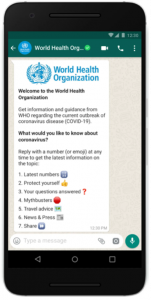
Another example is a cosmetics company, Sephora, that offer two smart chatbots. The first, Facebook Sephora Reservation Assistant, allows customers to make in-store appointments, and the second, Sephora Virtual Artist, allows them to try on makeup, virtually. They also have Sephora Kik Bot to provide tips, reviews and how-to videos.

Many businesses want to go omni-channel and platforms such as ActiveChat.ai, Quriobot and Respond.io are ready to accommodate the growing demand. In addition, companies now have the luxury of building chatbots without touching any code by using platforms like Chatfuel, Botsify or Flow.ai with their simple drag-and-drop flows.
Chatbot apps – full steam ahead?
Chatbots apps or hybrid apps seem to become a new type of apps where chatbots play the role of user interface, offering more human-like interaction. Among some interesting chatbot apps are Andy and Lark.
Andy is a private English teacher chatbot that helps users to learn a language by using it in a conversation.

Lark is a disease prevention chatbot coach that offers personalized advice for losing weight, managing diabetes, lowering blood pressure, reducing stress, getting more active, and eating better.
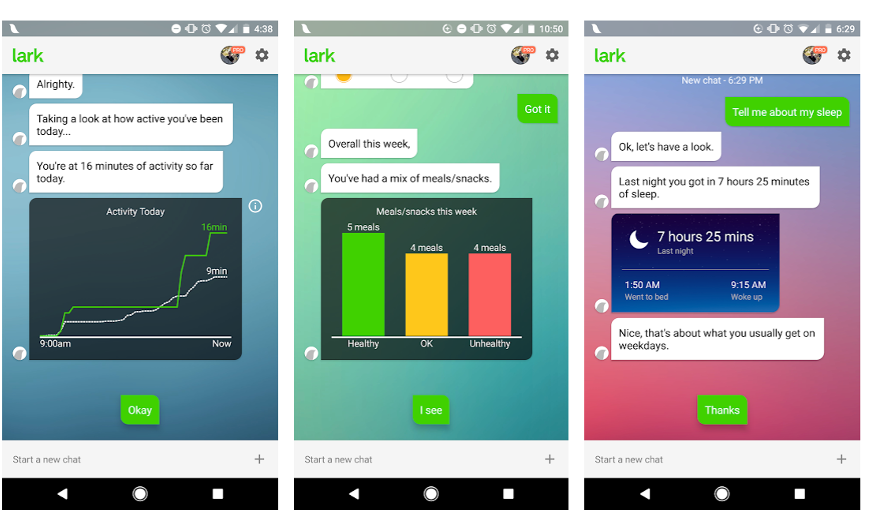
A meaningful chat with a bot? Why not!
Chatbots have been widely adopted by businesses, but the majority available today are mainly linguistically based, using algorithms to determine the meaning of a question and the likelihood of a correct answer by applying ‘if/then’ logic to create conversational flows.
However, in 2020 chatbots got upgraded with some additional intelligence after advances in AI technologies like machine learning. These days intelligent chatbots can:
- fulfil modern shoppers’ requirements for real-time 24/7 tailored support
- allow users to interact on their own terms without additional searches, wading through FAQs, or contacting customer service
- help users choose from a roster of products by offering personalized recommendations
- send deals and discounts
For example, the H&M chatbot provides a more ‘human’ digital experience in a nice, hassle-free conversational manner.
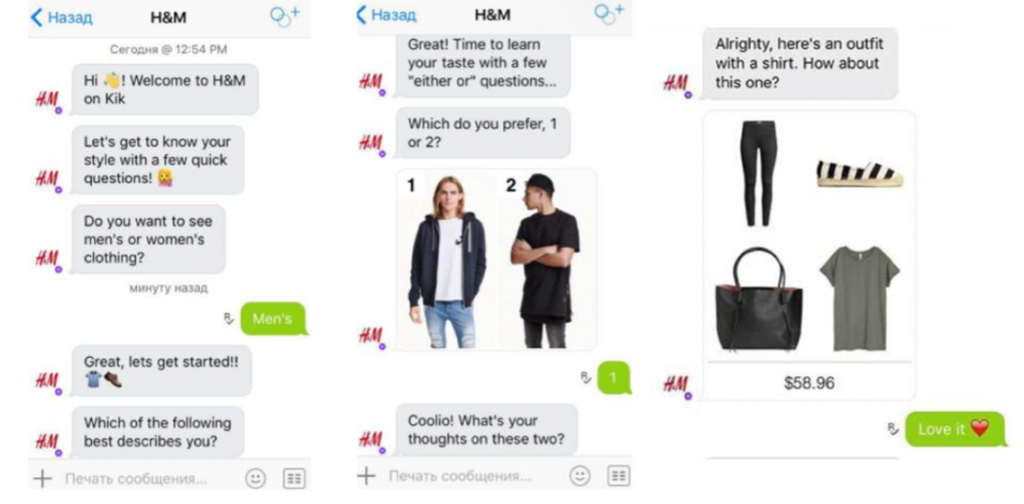
But not only e-commerce businesses utilise the benefits of conversational chatbots. Kotak Mahindra Bank’s AI-powered chatbot Keya delivers quick and smart answers to a wide range of banking queries.
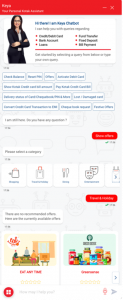
And Virgin Media Andi BOT helps to effectively and efficiently go through troubleshooting when experiencing connectivity problems
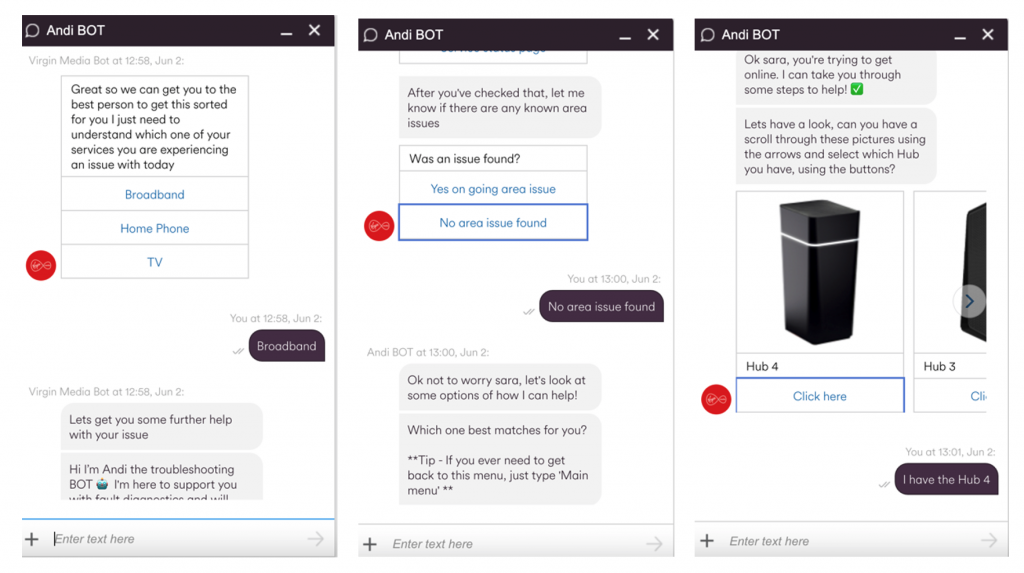
And how about chatbot aggregators?
Another interesting trend that deserves special attention is a chatbots’ capability to respond to a request by getting relevant data from multiple apps and sites. It is like a chatbot marketplace.
For example, SnapTravel chatbot searches over a hundred hotel sites such as Expedia and Booking.com, and sends offers via Facebook Messenger, SMS or WhatsApp.
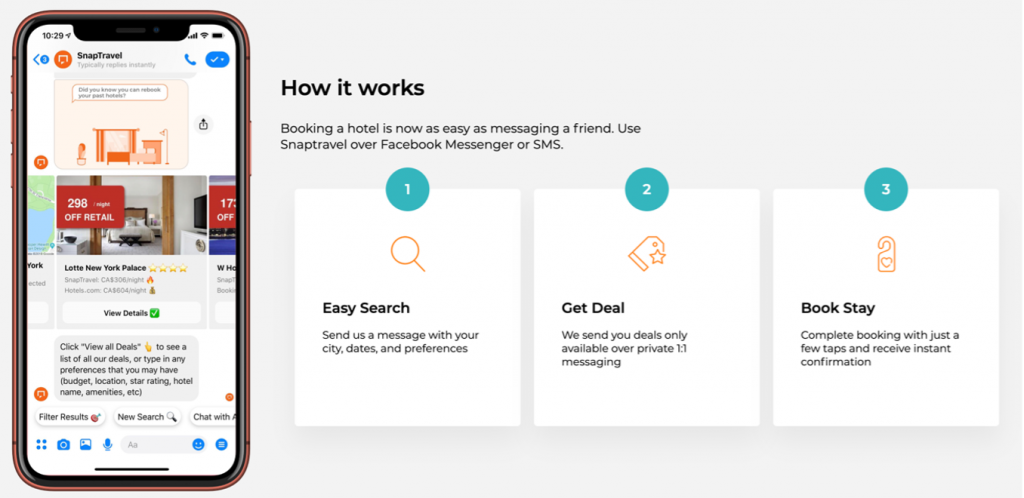
Masha.Ai platform reimagines the role of chatbots in e-commerce by offering shoppers access to 40+ brands via a single chat-app.
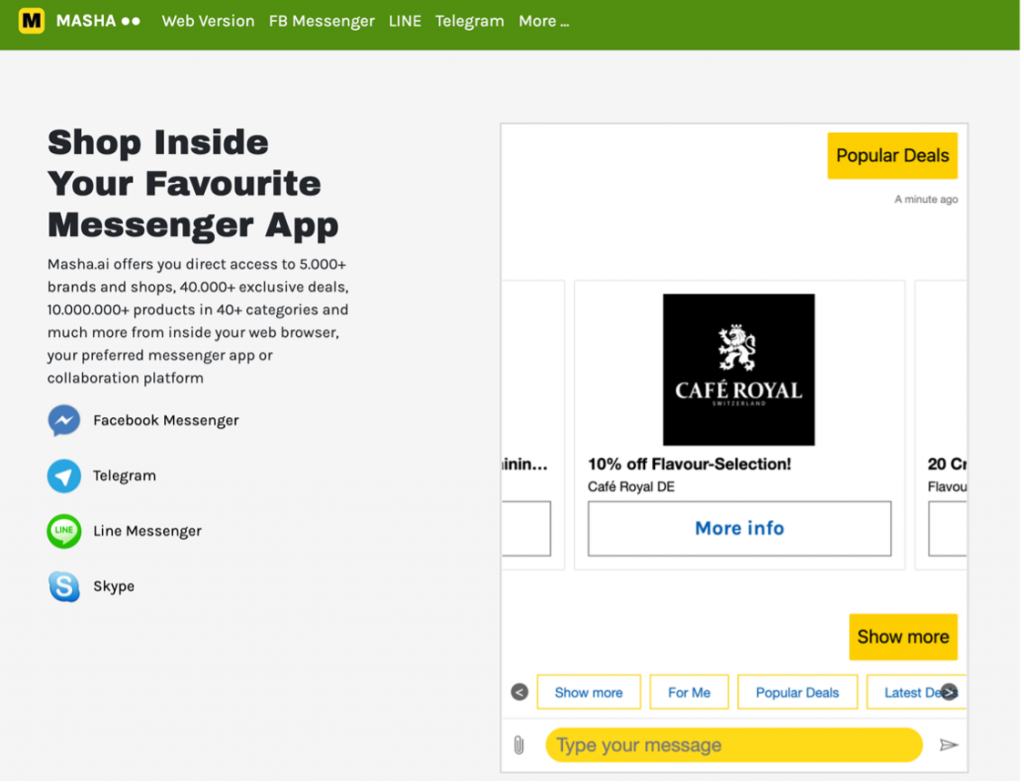
Welcome to C-commerce and emotionally intelligent chatbots
Conversational commerce, or c-commerce for short, is set to skyrocket in 2021. According to Chatbots Magazine, in 2021 more than 85% of customer interaction will be handled without human agents and $5 billion will be invested in conversation bots.
And no wonder considering the tremendous benefits AI-based chatbots can bring, such as increase in customer loyalty and engagement or money savings on customer services by up to 30%.
Some predict that 2021 will be the year when chatbots will gain emotional intelligence. They can understand users’ behaviours, purchasing habits, and preferences over time. But improving their understanding of human emotions from the conversation is the next step.
We anticipate that chatbot technologies will eventually evolve into a series of digital concierges catering to different areas of our lives. Therefore, revenue-driven brands need to invest in conversational digital experiences if they want to stay competitive in the long run.
Interested in understanding how you can improve your user experience using chatbot technology? We can carry out a range of methods to understand your audience needs, design and test solutions that work. Get in touch, we would love to talk.
Learn more
- Blog: Designing chatbots – a guide
- Blog: the importance of UX when designing chatbots and voice interfaces





